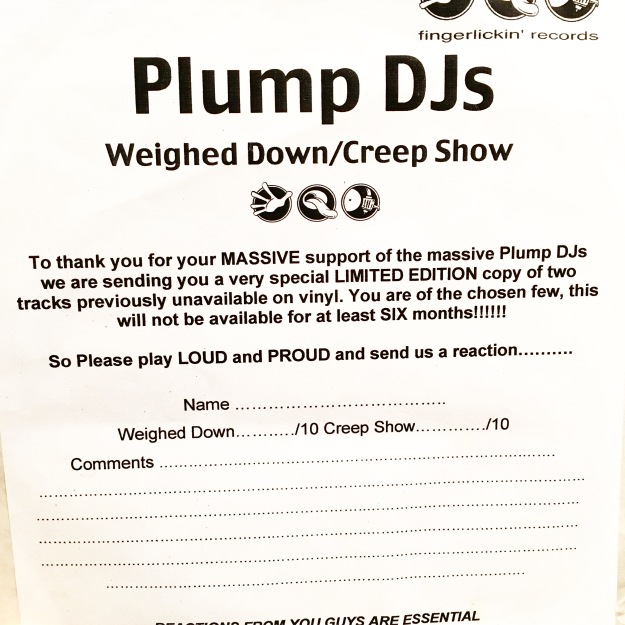
In a recent interview with the Daily Telegraph in the lead up to Ministry of Sound’s two sold out ’Reunion’ parties (covering the era 2001 – 2004) in Sydney, the interviewer asked us if we thought that era could make a comeback? Other than the aforementioned ‘reunion’ parties the answer was clear to me: no. Why? Because it was a convergence of so many factors that could never be reacreated no matter how much we tried. For me these were: they way music was distributed (especially to DJ’s), the place held by dance music as it emerged from the ‘underground’ into the mainstream, the pretty much non-existence of the internet, and lockout laws. In the first part of ‘What Made the Early 2000’s so Great for Dance Music’ I’ll touch on how the role of DJ’s and vinyl made that era so great…
In the late 90’s and early 2000’s the only way most people could hear dance music was in a club, played by a DJ. There were of course compilations put out by labels like Ministry of Sound and community radio stations that played it but the main source was clubs and DJ’s. As most dance music was pressed on vinyl (especially the more underground styles) there was no other way for people to hear dance music other than to actually see a DJ play it. This intrinsically made DJ’s important and club nights special as both were gatekeepers to a sound that didn’t exist anywhere else. Of course anyone could buy vinyl, but buying vinyl in and of itself was an art form. It was something you had to be dedicated to. It wasn’t a matter of clicking ‘buy’ on a website, it was about physically taking yourself to a record store on the right days (shipment days), getting to know the staff, listening to a million records in store, and then spending some decent cash on the tunes themselves ($15 – $20 a 12 inch which could mean just one track!). Yep, I would often starve in order to have new music ha ha. That’s what DJ’s did and that’s why people followed them and in turn why people went to clubs. DJ’s were dedicated, and worked hard to bring that music to the people. Not everyone could do it. In short, this made DJ’s ‘special’ and in turn helped make club nights special. It made the whole thing special.
In 2016 there seems to be less division between what is accessible to DJ’s and what is accessible to the general public. In fact DJ’s and the general public often have access to the same music at the same time. Many record labels release music publicly around the same time DJ’s receive it on promo which means the whole concept of DJ’s being the ‘gateway’ to ‘special’ and ‘unheard’ music that couldn’t be accessed ‘anywhere else’ has pretty much gone out the window. I recall having promos for months before anyone else got them. Imagine that? I was the ONLY person in all of Australia with a tune that tonnes of people loved and wanted to hear and lost their shit to when they heard it! Of course I would cain those tunes and as a consequence built a good part of my career and profile on having tunes other people didn’t. That kind of culture doesn’t exist as much these days for non-artist DJ’s.
With everyone now having access to the same music at the same time I think a lot of people now think the only difference between the people on the dancefloor and the DJ is that the DJ just happens to be the person in control of the music at that point in time, but really anyone could do it couldn’t they? It’s the reason why I’ve often been asked if people can plug their phones into the decks so they could hear their favourite tune – that would of been unheard of 15 years ago (both because phones didn’t play music and because people would never cross that line with a DJ unless they had a dub plate ha ha). In this sense the cultural importance of the DJ has shifted, and perhaps lessoned in some ways (and by this I mean a DJ-DJ, not an artist-DJ which I will get to at a later blog).
In essence the concept of what clubs are and what DJ’s mean has shifted dramatically. Without doubt clubs and local DJ’s were far more ’special’ in many ways in the early 2000’s then they are now because they were pretty much the only way you could hear dance music. But that’s what made those days great. You could just imagine, not having access to certain tunes all week and then finally getting to go out on the weekend to hear those songs played by your favourite DJ. No wonder there was such an electric energy in so many clubs and why so many local DJ’s could build strong local followings. Now that we all have the same music, I’m not sure we will ever see that level of excitement return to local clubs with local DJ’s who are just playing dope tunes. It was a time and a place, altered forever by the rise of the internet and a new era of ‘artist-DJ’s’. More on that next time!
KK x

I love this so much. Would also add that with limited internet, street press like 3D world or posters on power poles were often the best way to find out about events. I had a weekly ritual of scanning through 3D world which eventually led to reading the whole thing and learning about DJs and music I probably would not have gravitated to.
LikeLike